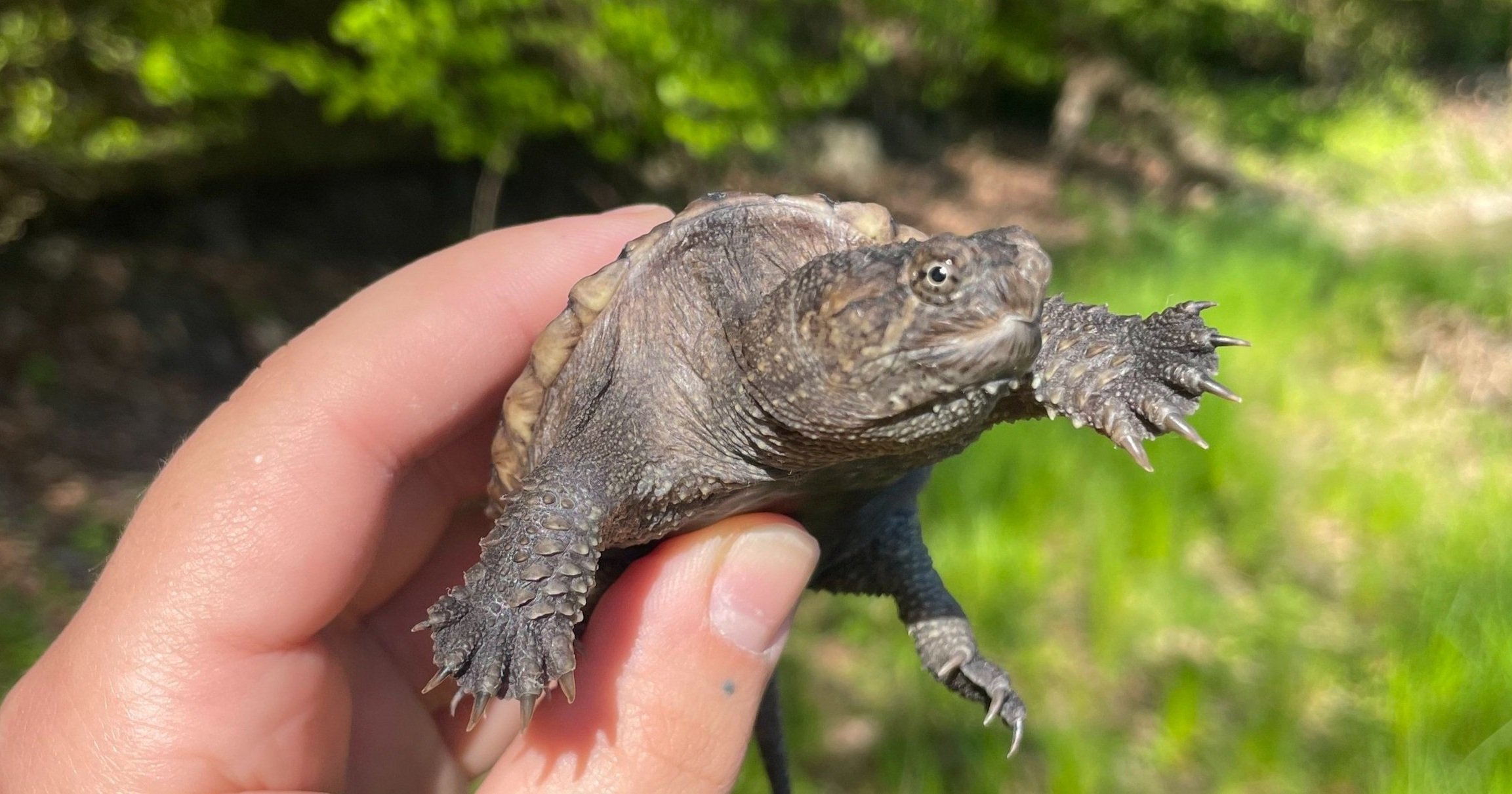
Help! I Found a Turtle!
Pennsylvania is home to a variety of turtle species, and every individual is important to our fragile turtle populations. Unfortunately, several species in Pennsylvania are threatened because of habitat loss and poaching. Help our wild turtles by encouraging others to never pick up and take home a turtle they find on the road.
Remember: It is illegal to keep and raise wildlife
Myth: Turtles with broken shells are dead or cannot be rehabilitated.
If You Find a Turtle That:
Has been in a dog or cat’s mouth
Has been hit by a car
Has swollen eyes or ears
Has a broken shell or limbs
Has been in human care for any amount of time
This is an emergency. Receive immediate support here or contact your local wildlife rehabilitator.
If You Find a Turtle That:
Is a baby or juvenile
Is digging in your yard
Is in a residential area away from water
This is normal! Turtles are independent as soon as they hatch and do not need help, even if they are only the size of a quarter! For more solutions to common problems with turtles in human spaces, visit this page.
How To Save Baby and Juvenile Turtles
All turtles are independent as soon as they hatch and look like miniature versions of adults. Mother turtles lay their eggs during late spring and early summer. Hatchlings will emerge from their eggs in mid to late summer.
Taking any species of turtles from the wild is illegal and dangerous to threatened populations.
Never release pet turtles into the wild. They may not survive and they compete with threatened native species.
Many Pennsylvania turtle species are under threat. Every individual is important. Many turtles, including Eastern Box Turtles like this one, can live to be 80-100 years old!
How To Save Adult Turtles
The most common way people find turtles is when turtles are in the middle of the road. Turtles move across their habitat to find food and mates.
Move a turtle safely in the direction it is travelling if it’s on the road. Turtles are extremely attached and dependent on their home territory. Never relocate a turtle as they will try to find their way back. You can move the turtle by holding it like a sandwich — with two hands holding the top and bottom of its shell.
NEVER lift Snapping Turtles by their tail. Lift them at the back of their shell near the tail. Lifting a turtle by its tail can cause spinal damage. Snapping turtles can be dangerous due to their powerful jaws and long neck. No matter the species, you can also encourage a turtle to move on its own using a shovel or stic and gently coaxing it.
Contact a wildlife rehabilitator for help if a turtle has been hit by a car. Serious shell injuries can be fixed with time and care. Help give these important creatures a chance!
Keep pets away and do not disturb turtles. If you find a turtle digging in your yard, it is possible that it has chosen that spot for nesting or brumation (the reptile version of hibernation).
Never take a turtle home or move it to a new location. The turtle will try to return to its home territory, putting it in grave danger. Relocating a turtle also increases the spread of disease to new populations.
For more solutions to common problems with turtles in human spaces, visit this page.
Do you still have questions after reading the information above? Contact us or a local wildlife rehabilitator!
Have you found this FREE information helpful? Help support our work and expand our services by giving a gift.
Resources
Answering the Call of the Wild by Erin Luther. Toronto Wildlife Centre.



